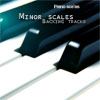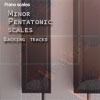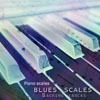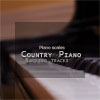Backing tracks
Music without piano parts made for improvise and exercise with on keyboard or piano. Free tracks in various styles.
 Major Scales Backing Tracks
Major Scales Backing Tracks
One for each Major scale.
 Minor Scales Backing Tracks
Minor Scales Backing Tracks
One for each Minor scale.
 Minor Pentatonic Scales Backing Tracks
Minor Pentatonic Scales Backing Tracks
For Minor Pentatonic scale.
 Orchestra Backing Tracks
Orchestra Backing Tracks
Playing the piano to orchestra music.
 Blues Scales Backing Tracks
Blues Scales Backing Tracks
Jam tracks in the style of blues.
 Jazz Piano Backing Tracks
Jazz Piano Backing Tracks
Jam tracks in the style of jazz.
 Country Piano Backing Tracks
Country Piano Backing Tracks
Jam tracks in the style of jazz.
 Electric Piano Backing Tracks
Electric Piano Backing Tracks
Tracks especially suited for electric piano.
 Synthesizer Backing Tracks
Synthesizer Backing Tracks
Tracks especially suited for synths.
Backing tracks are musical arrangements designed for play-along practice. They are the perfect company if you want to improvise on your instrument. The tonal qualities of different scales make them magic tools for playing over chords and music arrangements.
The piano parts are missing and so is the melody. Since you are playing the melody part, you should in general play on the middle and high register of the piano, to make it sound as best as possible.
Here you find backing tracks for piano categorized by scales and keys. The Major Scales Backing Tracks album, for example, include instrumental tracks made specially to be used with the Major scales.
You don't need to change scales with chord changes. A single scale can be used for the whole song. Click on “Show scale” below the audio element for a diagram of the scale to use.
It can be difficult to get the scale you use to line up with the track when there is no sheet music to lead you. The man goal with these jam tracks is to train your ability to improvise.
Try learning licks to get some shortcuts to great improvising. For example, if you're interested in blues, search online for blues licks. By incorporating licks, you have something to support your improvisation. In the next phase you should try to modify some of the licks, increase your lick repertoire as well as your improvisational vocabulary. See also How to improvise on piano.
Various backing tracks presented by Pianoscales.org.
C Fast Blues
Show scale

A Minor Americana
Show scale

D Major White Shade Pop
Show scale

G Minor Ballad
Show scale

A Minor Techno Stabs
Show scale

C Major Great Harmony
Show scale

C Explosive Pop
Show scale

All backing tracks (+100) are available in the member area.
Play over specific chords – step by step
To make it easier for you, the backing track can be sliced into separate chords and versions with only two or three chords. This can help you understand the underlaying factors that create the match between the notes you play on the piano and the song you hear.
G Country (only G chord)
The keyboard diagram shows notes that can be played together with the sound track below. The blue colored keys are the primarily notes to play (these are notes of the G Major chord) and the grey
colored keys are secondary notes (these are notes of the G Major scale that can be used as passing notes). Be extra careful with C and F#, since they will create minor second intervals together with parts of the G chord, which will result in a dissonant sound. Although, in some situations F#, for example, can sound great; this is because other notes often are involved together on the same time, and F# is also the leading tone (that musically “leads” back to the tonic, i.e. G) in the G Major key.

Old Country (only D chord)
The blue colored keys are notes of the D Major chord and the grey
colored keys are remaining notes of the G Major scale that can be used as passing notes. Be extra careful with G since it will create a minor second interval together with the F# in the D chord. Notice also that the D note don't contribute much when the D chord is played.

Old Country (only Em chord)
The blue colored keys are notes of the E Minor chord and the grey
colored keys are remaining notes of the G Major scale that can be used as passing notes. Be extra careful with C and F#, since they will create minor second intervals together with the parts of the Em chord.

Old Country (G and D chords)
Now, it is time to make it a little bit harder. But the result can be better if we succeed. The track involves both G and D chords; therefore, you should try to hear the changes and modify your note palette depending on the chord that is play (the order is G - D - G - D and so on). Look at the diagrams above for G and D and change between these when the chord change in the song.
Old Country (G, D and Em chords)
Here we will increase the level once again. The track involves G, D and Em chords (the order is G - D - G - Em - G - D - G - Em - G). Look at the diagrams above and change between these when the chord change in the song.
To summarize, these tracks were all in the same style as "G Old Country" above, but with less chords and changes. The primary suggested scale to play over "G Old Country" is the G Major Pentatonic scale. It doesn't fully coincide with the notes suggested in the primarily and secondary notes diagrams, but it will work as a one-way-solution for the song. To make it more challenging and with a potentially much better result, you should add the C and F# note as well plus emphasize chord changes with matching tones, but only over some of the chords in that song. The other chords in the song are C, Bm and Am.